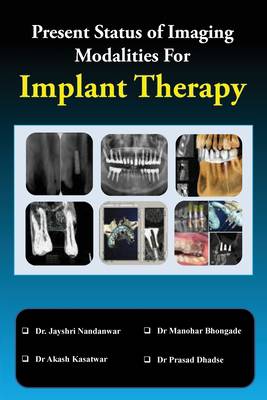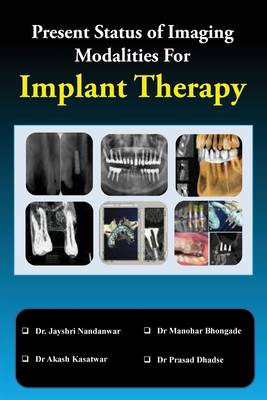
- Afhalen na 1 uur in een winkel met voorraad
- Gratis thuislevering in België vanaf € 30
- Ruim aanbod met 7 miljoen producten
- Afhalen na 1 uur in een winkel met voorraad
- Gratis thuislevering in België vanaf € 30
- Ruim aanbod met 7 miljoen producten
Zoeken
Present Status of Imaging Modalities For Implant Therapy
Jayshri Nandanwar, Manohar Bhongade
Paperback | Engels
€ 21,45
+ 42 punten
Omschrijving
The use of dental implants in oral rehabilitation has currently been increasing since clinical studies with dental implant treatment have revealed successful outcomes. Successfully providing dental implants to patients, who have lost teeth and frequently the surrounding bone relies on the careful gathering of clinical and radiological information, on interdisciplinary communication and on detailed planning. Traditionally, conventional radiographic images (two dimensional) e.g., periapical, occlusal, panoramic and cephalometric images have been used to assist practitioners in planning implant treatment. Clinicians have been diagnosing, treatment planning, placing and restoring dental implants using periapical and panoramic radiographs to assess bone anatomy for several decades. Two dimensional images have been found to have limitations because of inherent distortion factors and the non-interactive nature of film itself provides. With the advent of technology, Digital Subtraction Radiography (DSR) was introduced to dentistry in 1980s. Since conventional radiographic modalities provide a two-dimensional (2D) representation of three dimensional (3D) structures. Therefore, 3D information is essential for the implantologist before placement of osseointegrated dental implants. Hence, the advancement of radiographic technology including computed tomography, cone beam CT, DentaScan, Spiral tomography, Linear tomography, Sectional/Transtomography, Interactive computed tomography, imaging stents and softwares are increasingly considered essential for optimal implant therapy. Therefore, the aim of this book is to present in depth of the benefits of various radiographic imaging techniques available for implant therapy.
Specificaties
Betrokkenen
- Auteur(s):
- Uitgeverij:
Inhoud
- Aantal bladzijden:
- 142
- Taal:
- Engels
Eigenschappen
- Productcode (EAN):
- 9789354461989
- Verschijningsdatum:
- 3/06/2021
- Uitvoering:
- Paperback
- Formaat:
- Trade paperback (VS)
- Afmetingen:
- 152 mm x 229 mm
- Gewicht:
- 217 g

Alleen bij Standaard Boekhandel
+ 42 punten op je klantenkaart van Standaard Boekhandel
Beoordelingen
We publiceren alleen reviews die voldoen aan de voorwaarden voor reviews. Bekijk onze voorwaarden voor reviews.








